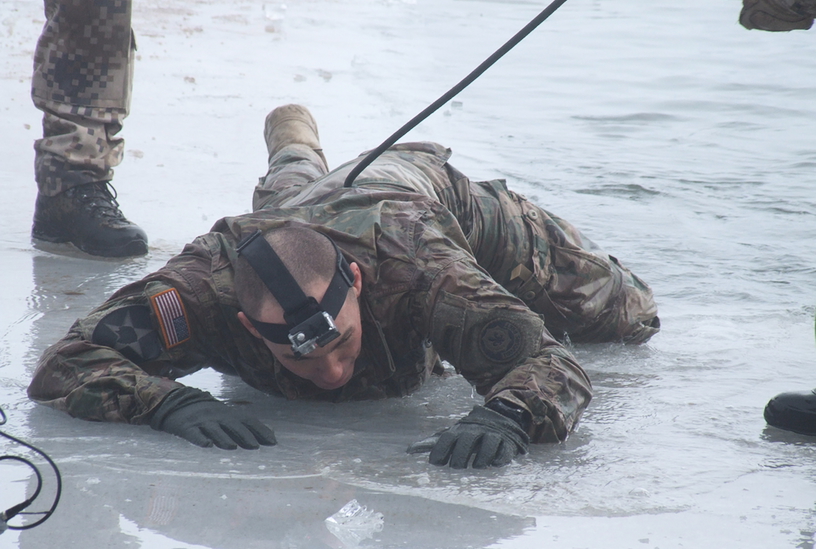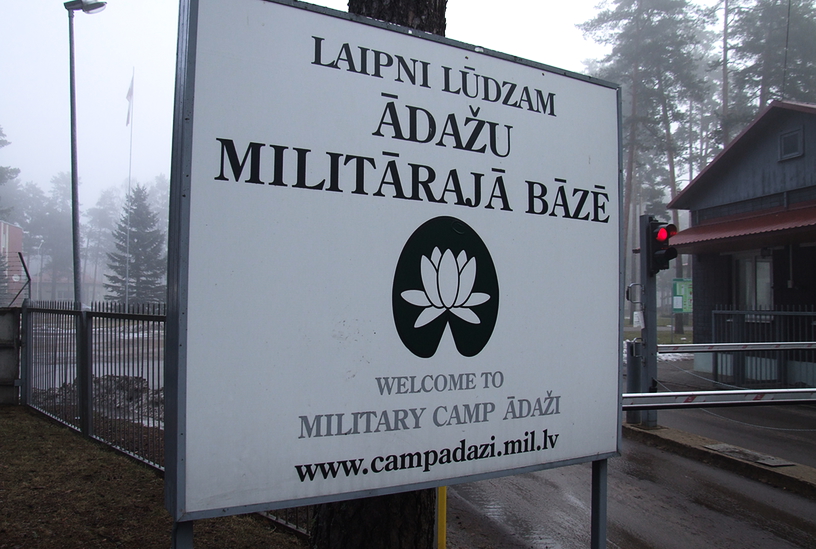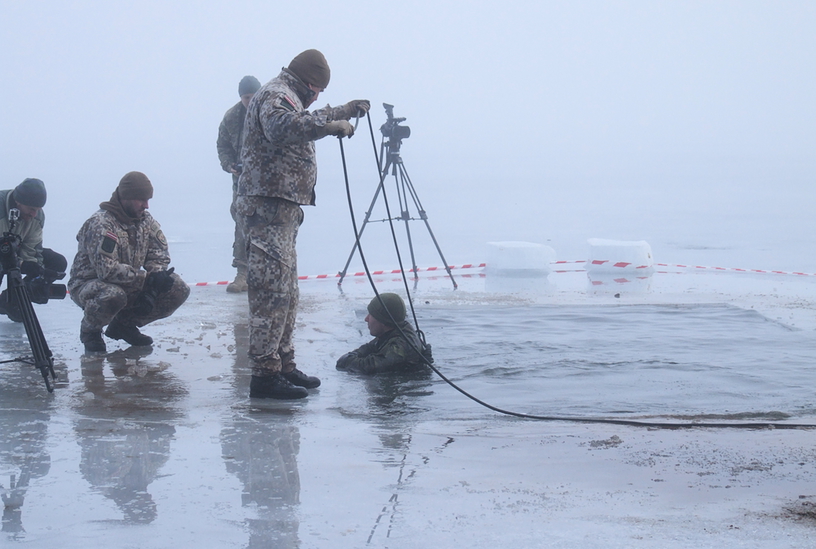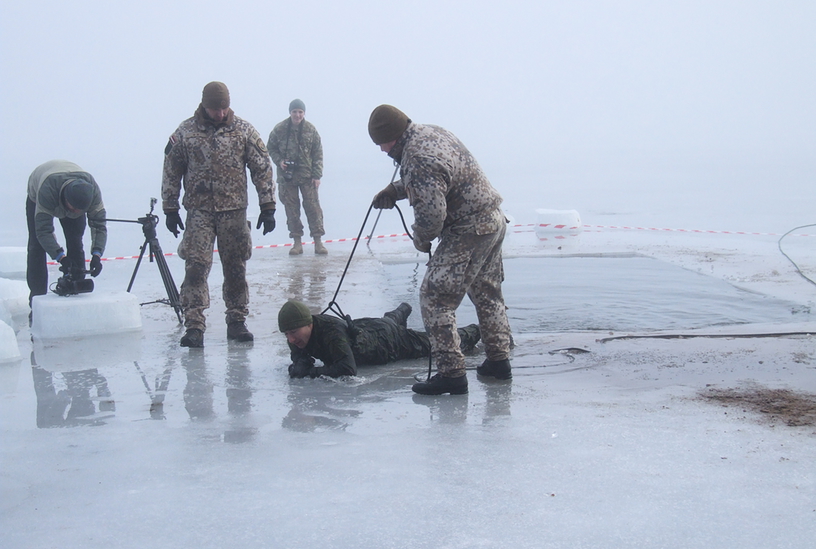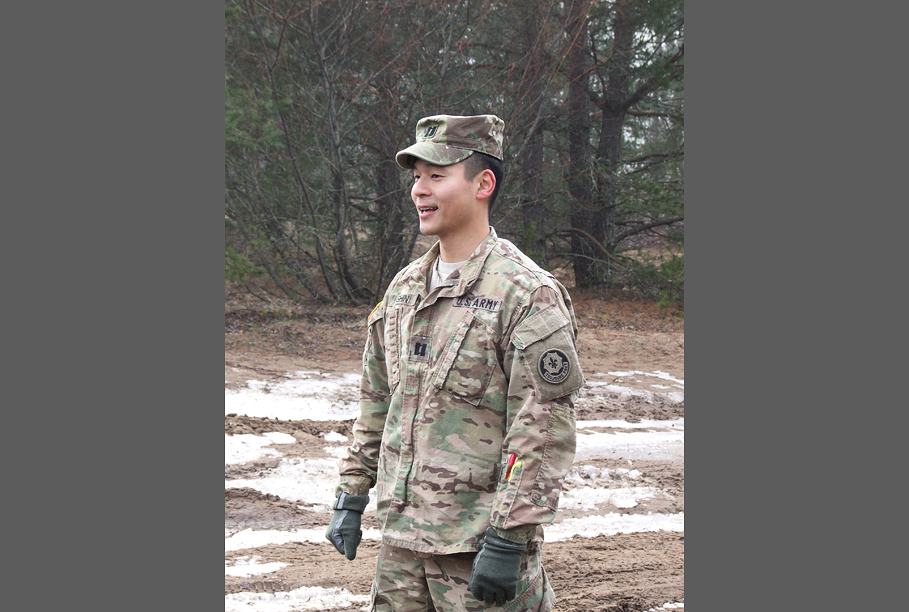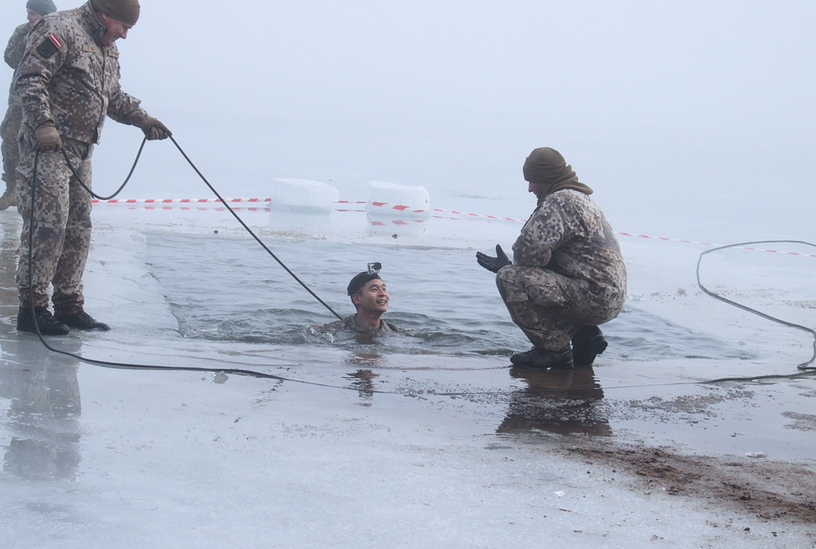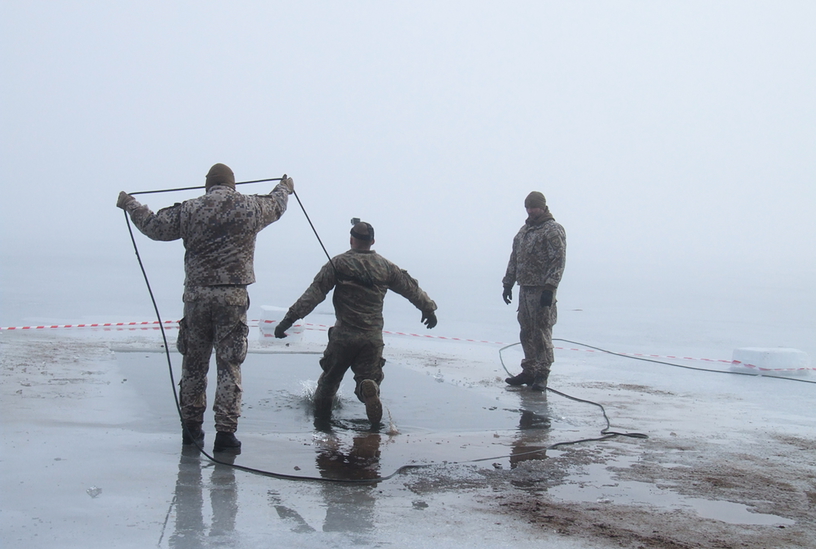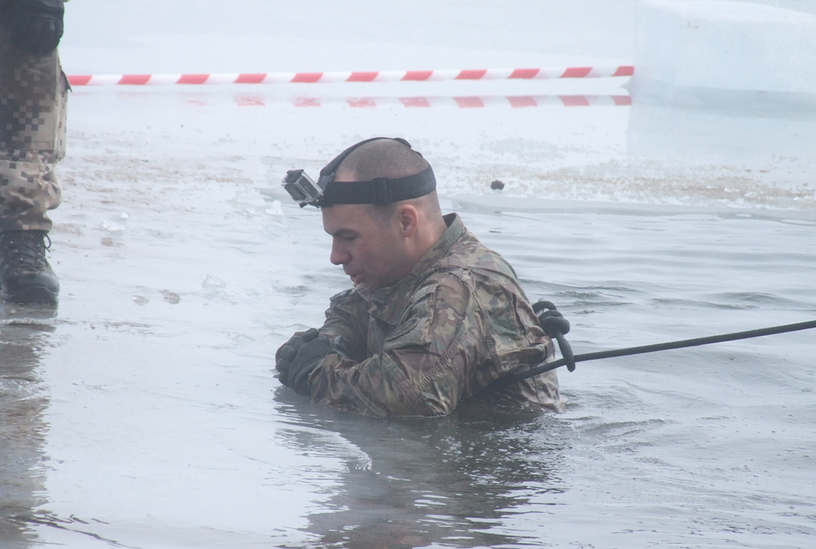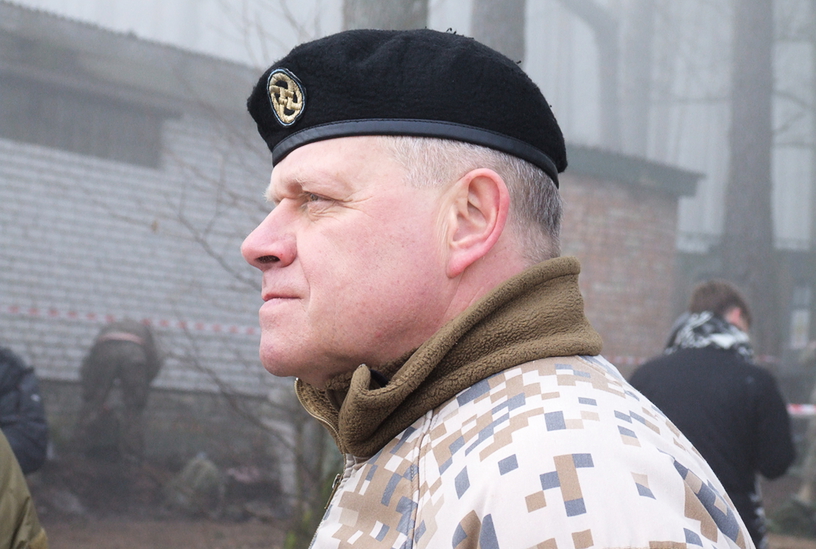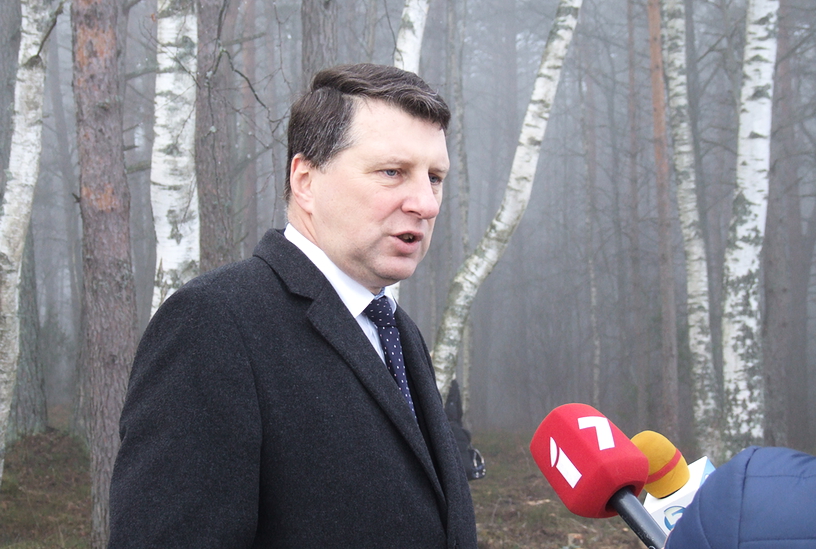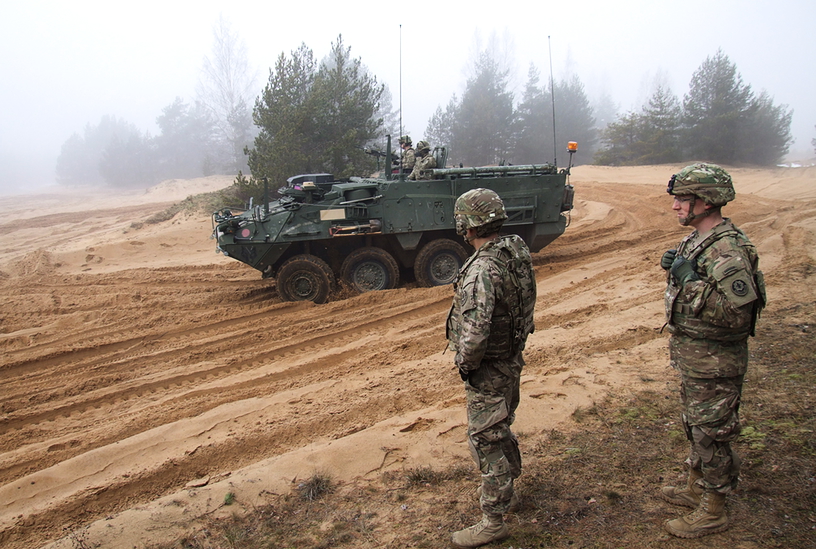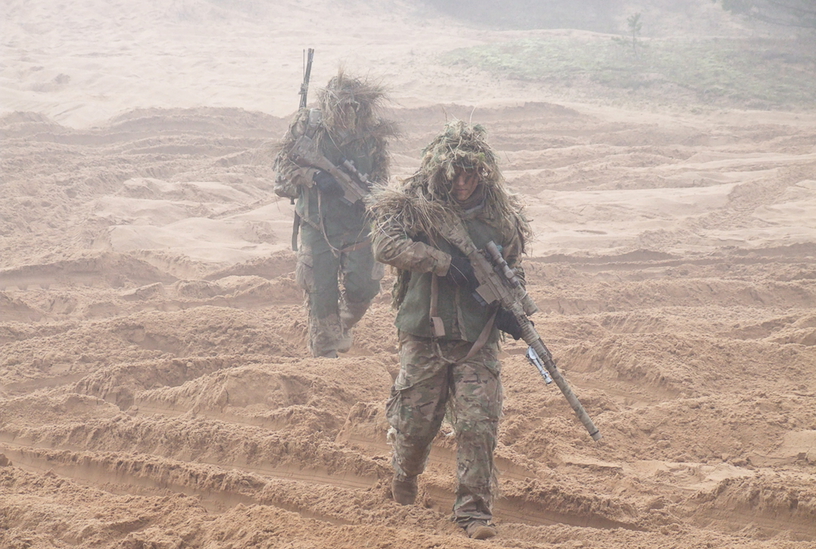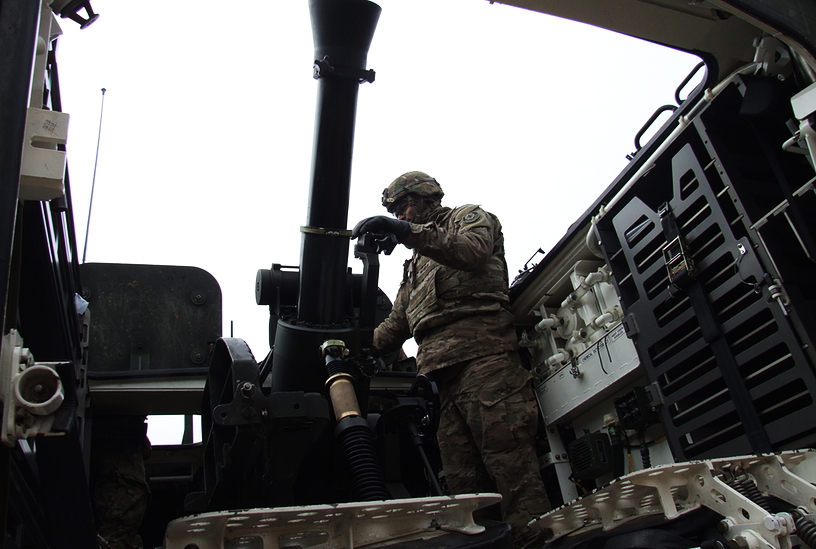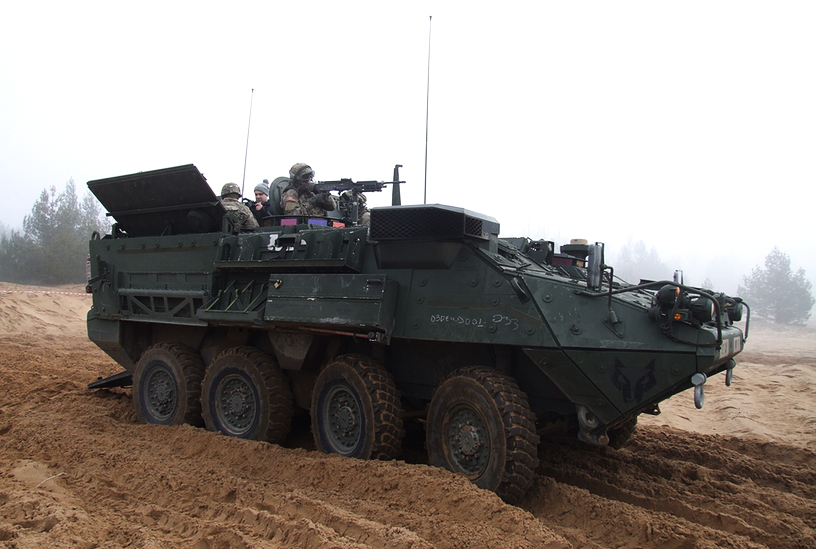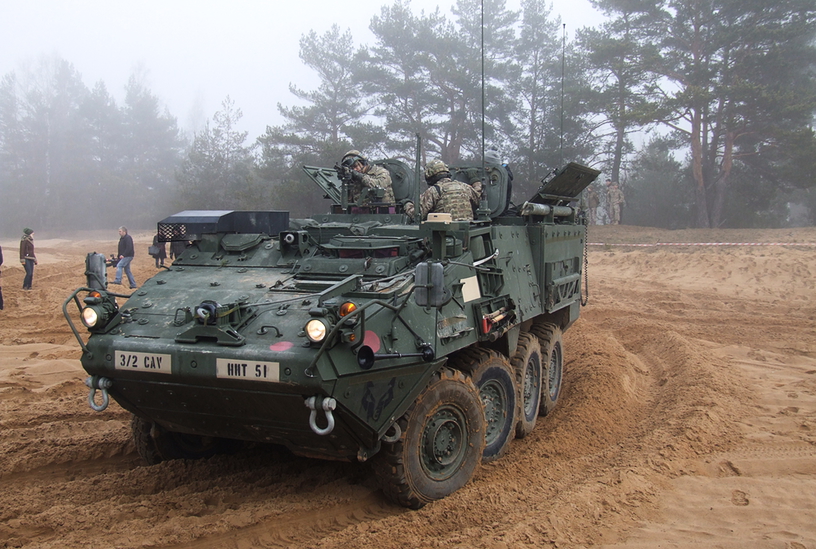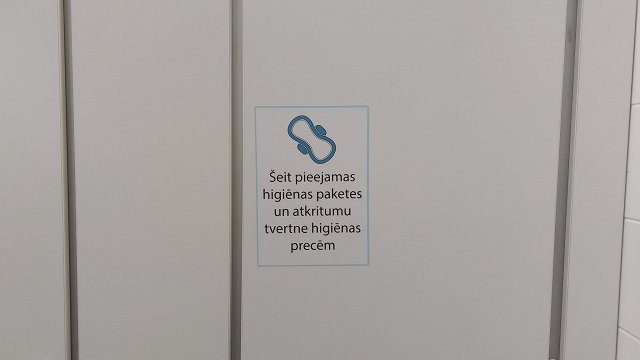They laugh - but maybe with just a hint of nervousness. That's understandable as Capt Shin is currently bobbing up and down in a square hole cut into the ice of the lake located on Adazi military base, just outside the Latvian capital, Riga.
Back at the ice hole, the Latvian instructor talks to Shin to test his reactions as the seconds tick by."Where are you right now?" he asks.
"In Adazi, Latvia!" shouts Shin in best military style.
"No, you are in the water," says the instructor quietly. "Now wriggle out - like a snake."
Shin wriggles out like a snake, regains his feet and skids back towards his comrades, wearing a broad smile. He looks like a man who enjoys his job, even when his job involves jumping fully clothed into a frozen lake.
"Next!" calls the instructor.
A Latvian soldier strides forward, his smile perhaps not quite as large as Shin's.
Shin has five minutes to get dressed. The penalty for failing to do so is not specified - but maybe involves another ice bath. Despite his frozen fingers, he's soon back in full uniform and happy to answer LSM's questions just as soon as he's pulled his pants up.
Shin's dunking, and that of around 50 colleagues, is no mere show of bravado, despite the good-natured banter that is in evidence.
As Captain Normunds Stafeckis of the Latvian Army says: "This is a normal national exercise we do on a regular basis, though it is the first time we've had participants from the US and Canada. But it's important soldiers can operate not just in fine weather on warm days. This gives some real world conditions but also tests them out in a stressful situation."
That stress is not lessened by the fact that the parade of plunging penguins is watched by Defense Minister Raimonds Vejonis and the head of Latvia's armed forces, General Raimonds Graube as well as officers from their own regiments who are gleefully capturing the whole thing on film.
The pleasant flipside of that pressure is the way tests such as this bond different soldiers from different nations with different backgrounds. Instead of the rivalry one might expect from different services, the atmosphere is extremely friendly, with high-fives flying in all directions as soon as the ordeal is over.
This esprit de corps is in a way, a microcosm of how NATO works as a whole, Graube tells LSM.
While military exercises don't get much more basic than jumping into a hole to order, such drills still have their place even in a world of hybrid war, cyber attacks and asymmetrical warfare, Defense Minister Vejonis says.
The military needs to be more flexible than ever in order to react to new and unclear threats, but ultimately the existence of a well trained, well-equipped fighting force is the foundation on which everything else must be built.
And just in case the sight of NATO troops jumping into a freezing lake and not seeming to mind too much isn't enough to make potential aggressors think twice, a demonstration on the other side of the lake by mortar-equipped US Stryker armored personnel carriers probably is.
Lieutenant Gunoe and Staff Sergeant Galas, who head up the Stryker unit, told LSM about their potential as flexible fighting vehicles as well as simple transporters, their mortars able to fire "six clicks", with good maneuvrability, a top speed of around 100km/h and a range of three to four hundred miles on a tank of gas.
"By the way," says Gunoe, "when we're using the mortars we need spotters on the ground to direct their fire. We have a couple of snipers on that hill over there, can you see them?"
No you can't, is the answer - at least until two of the bushes stand up and walk towards us carrying 20-pound sniper rifles with bipods.
"Could you see us?" asks one of the snipers, genuinely interested to know if he had been detected. He is perfectly suited to his job: so softly spoken and calm he might be a librarian rather than an elite soldier with nine years' experience.
Asked what the most important quality is for his particular job, he ponders for a long time, barely visible through his ghillie suit even at arm's length.
"Hmmm... patience," he eventually decides.
And what about "American Sniper", the film that has put his particular role center stage?
Somewhere beneath the bundles of grass and weeds that fringe his hat, there is a smile.
"Let's just say it was good entertainment... as a film."
At a time when politicians, think-tanks and assorted experts are full of ideas that sometimes border on the hysterical regarding what "we" have to do to protect ourselves, it's reassuring that "they" who would actually do the fighting if the worst came to the worst seem so calm about the whole question.
Probably a quick jump in an ice lake wouldn't hurt some world leaders, either.
